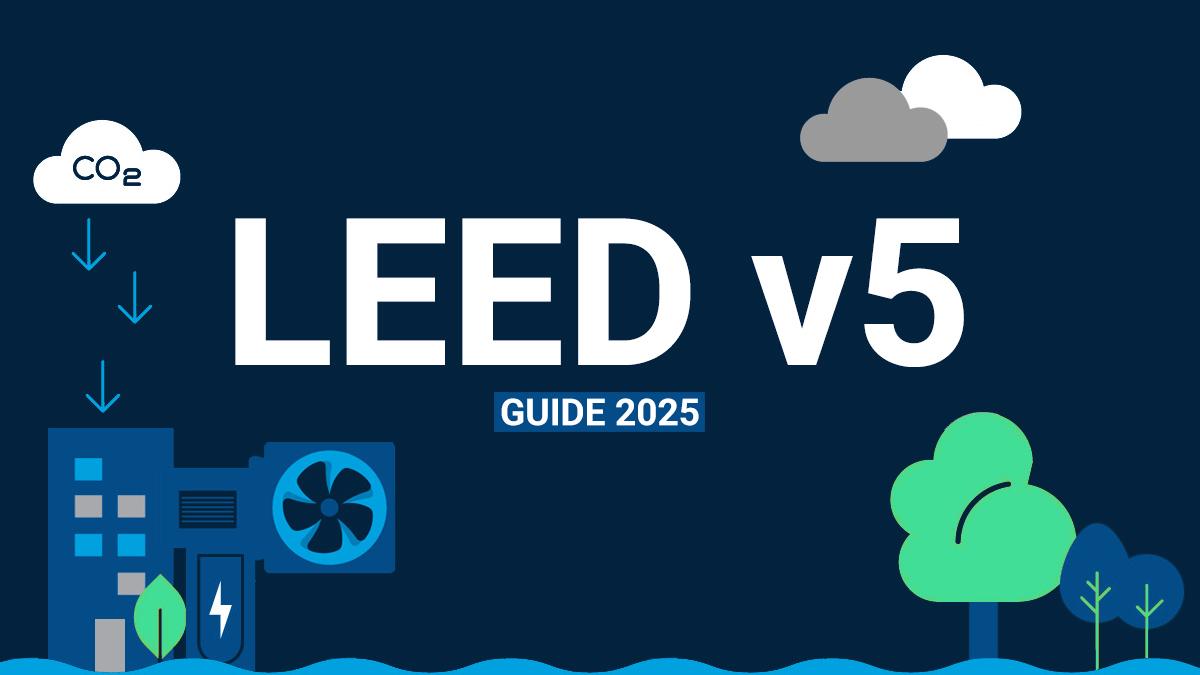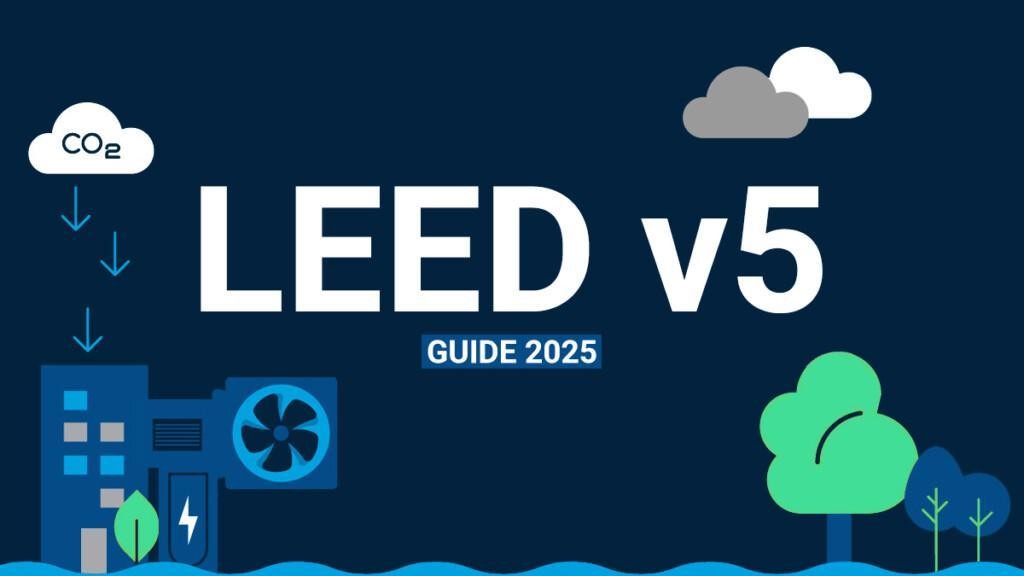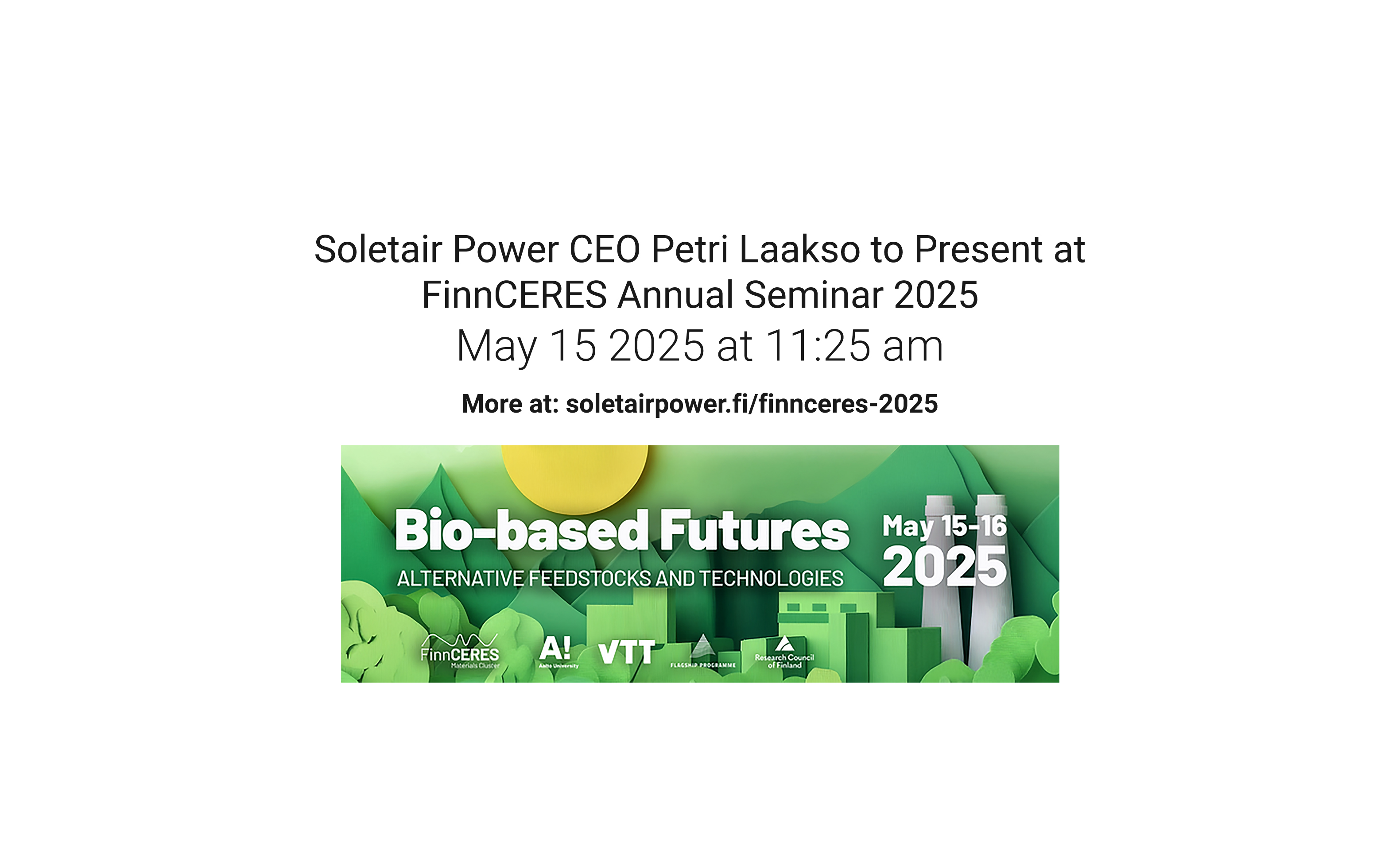LEED v5 Guide 2025
The U.S. Green Building Council (USGBC) launched LEED v5 on April 28, 2025, introducing a framework for green building certification that prioritizes decarbonization, human well-being, and ecological conservation. For building owners, LEED v5 offers a pathway to enhance asset value, reduce operational costs, and meet environmental regulations while aligning with global climate goals like the Paris Agreement and AIA 2030.
Why LEED v5 Matters for Building Owners
LEED-certified buildings deliver measurable financial and environmental benefits:
- LEED buildings achieve a 21.4% higher average market sales price.
- 11% higher rent rates, attracting sustainability-conscious tenants.
- Reduce energy, water, and waste by over 20%, lowering utility costs.
- Attract favorable financing due to lower risk profiles and compliance with ESG criteria.
- LEED v5 aligns with emerging regulations, such as Denmark’s 2023 mandate limiting emissions to 12 kg CO2e/sqm/year for buildings over 1,000 sqm.
LEED v5 Scoring Structure
The 2025 LEED v5 awards up to 110 points across three impact areas:
- Decarbonization (50%): Zero emissions, all-electric design, renewable energy, reduced embodied carbon for Platinum.
- Quality of Life (25%): Health, equity, occupant well-being focus.
- Ecological Conservation (25%): Ecosystem protection, restoration.
LEED v5 Certification Levels
- Certified: 40–49 points
- Silver: 50–59 points
- Gold: 60–79 points
- Platinum: 80+ points, plus specific decarbonization thresholds
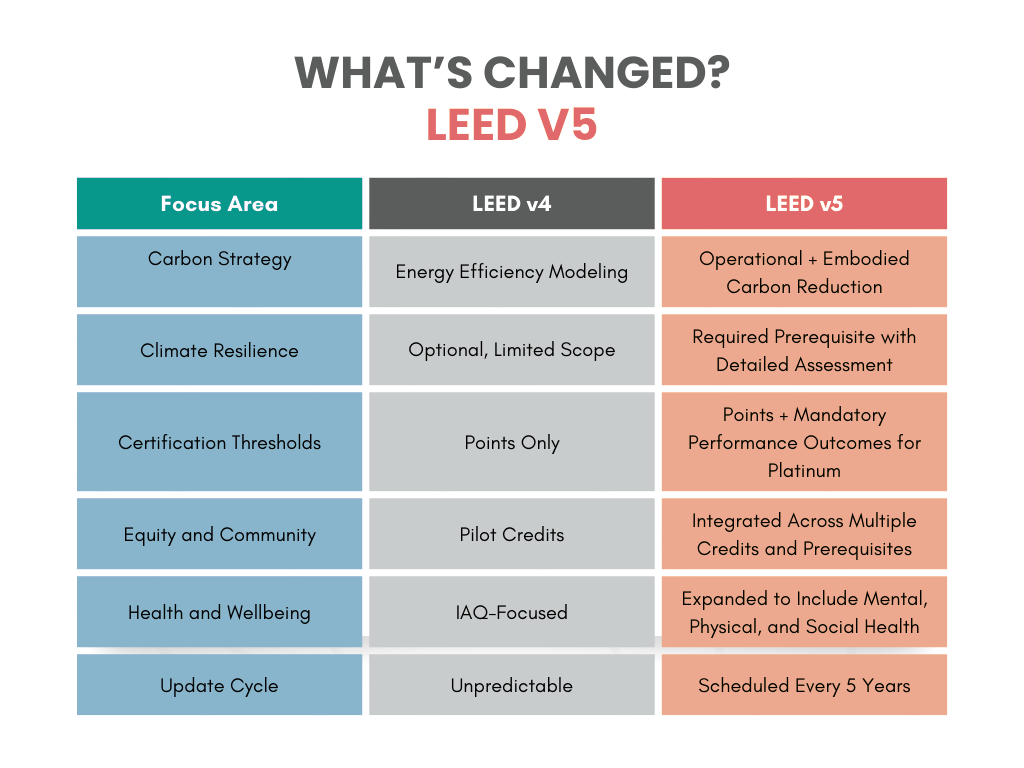
1. Decarbonization (55 Points)
Decarbonization is the cornerstone of LEED v5, targeting reductions in operational, embodied, refrigerant, and transportation emissions. Building owners can leverage innovative emission reduction technologies like sensor optimization or building integrated carbon capture to maximize LEED v5 decarbonization points.
Prerequisites
- Projects must estimate emissions from design through 2050.
- Mandates inventorying embodied carbon or material carbon impacts via life-cycle assessment (LCA).
- Projects submit annual site energy predictions, with USGBC generating a “business-as-usual” (BAU) carbon projection through 2050.
Key Credits
- Reduce Embodied Carbon (6 points): Rewards material substitutions or design efficiency reducing global warming potential (GWP). For example, using low-carbon concrete.
- Electrification (4 points): Encourages all-electric systems, critical for Platinum certification.
- Building Product Selection and Procurement (5 points): Consolidates Environmental Product Declarations (EPD), responsible sourcing, and material health into a three-level scoring matrix.
- Renewable Energy (6 points): Rewards on-site or off-site renewable energy procurement. For instance, solar panels, offsetting 20% of energy use, can earn 2–3 points.
- Innovative Carbon Reduction Strategies (5 points): Building owners can earn points for novel emission reduction technologies. For example, building-integrated carbon capture systems, like capturing CO2 from air with HVAC-retrofit-CO2-capture technology, can reduce operational emissions by 10–30% annually (depending on system efficiency and building size).
2. Quality of Life (27.5 Points)
This category emphasizes health, equity, and occupant well-being, enhancing tenant satisfaction and productivity.
Prerequisites
- Evaluates health, equity, and quality-of-life outcomes, requiring demographic and infrastructure analysis to ensure equitable benefits.
- Mandates continuous Indoor Air Quality (IAQ) monitoring, with thresholds 20% stricter than LEED v4.1.
Key Credits
- Enhanced IAQ (4 points): Rewards advanced filtration and ventilation strategies. Systems such as building integrated carbon capture can improve IAQ while reducing emissions.
- Social Equity (13 points): Awards points for fair wages, training, and safety for workers, especially cleaning and waste staff.
- Occupant Experience (3 points): Encourages daylight access, thermal comfort, and acoustic performance, improving productivity by up to 10%.
3. Ecological Conservation and Restoration (27.5 Points)
This category focuses on minimizing environmental impact and restoring ecosystems, enhancing site value.
Prerequisites
- Analyzes climate risks (e.g., flooding, heatwaves) based on service life and emissions scenarios.
Key Credits
- Connecting with Nature (2 points): Requires 12 biophilic attributes across three categories.
- Light-Pollution and Bird-Collision Reduction (2 points): Mandates bird-safe glass and reduced exterior lighting.
- Site Impact Reduction (4 points): Rewards minimal site disturbance, preserving native ecosystems.
4. Project Priorities (10 Points)
Merges Innovation and Regional Priority credits, offering flexibility for context-specific goals:
- Innovation: Up to 5 points for novel strategies, such as carbon capture systems demonstrating measurable emission reductions.
- Regional Priorities: Up to 5 points for addressing local environmental issues, like water scarcity or urban heat islands.
Financial and Strategic Benefits for Building Owners
- ROI: LEED v5 projects save 25% on energy, 34% on carbon emissions, and 11% on water, yielding $2–$5/m² in annual savings.
- Asset Valuation: Certified buildings avoid valuation risks from new regulations, with non-compliant assets facing 10–15% depreciation by 2030.
- Tenant Demand: Green buildings command a 7.1–11.6% rental premium across global markets.
- Innovation Leadership: Adopting cutting-edge technologies, like carbon capture, positions owners as market leaders, attracting ESG-focused investors.
Practical Steps to Maximize LEED v5 Scores
- Use LCA tools (e.g., One Click LCA, Carbonsight) to quantify carbon impacts during design, targeting a 10–20% GWP reduction.
- Transition to all-electric HVAC and appliances, paired with renewable energy contracts, to achieve 4–6 points in Electrification and Renewable Energy.
- Select low-GWP materials with EPDs, aiming for 5 points in Building Product Selection. Recycled content can reduce embodied carbon by 15–25%.
- Consider building-integrated carbon capture systems to reduce operational emissions.
- Invest in advanced ventilation and worker welfare programs to secure 10–13 points in Quality of Life, boosting IAQ and tenant satisfaction.
- Use Arc platform to track performance data for energy, water, and waste to streamline certification and ensure compliance.
- Engage LEED-accredited professionals to navigate prerequisites and maximize credits, reducing certification costs by 5–10%.
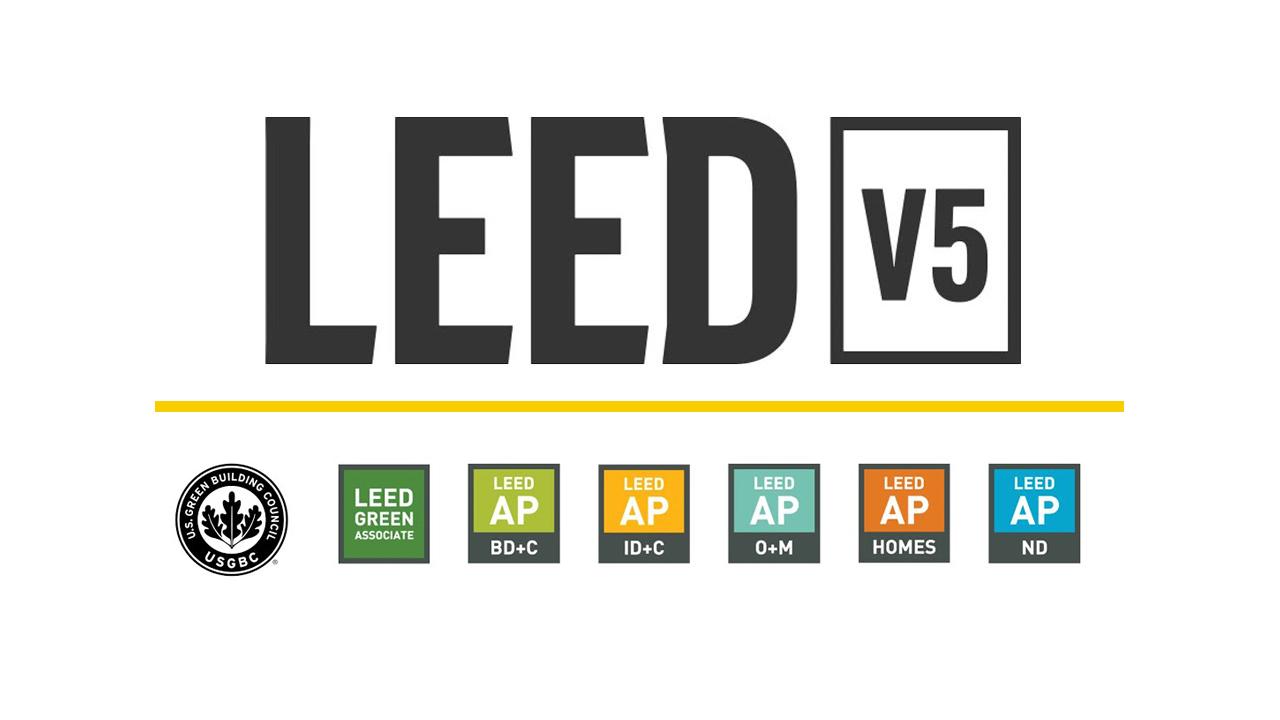
LEED v4/v4.1 registrations are open until Q1 2026, with certifications allowed until 2032. Owners can transition projects via gap analysis. However, LEED v5 empowers building owners to create high-value, low-carbon assets that meet market and regulatory demands. By prioritizing decarbonization, quality of life, and ecological conservation, owners can achieve up to 110 points, with 50% tied to emission reductions. Strategic investments in electrification, low-GWP materials, and innovative technologies—like building-integrated carbon capture—maximize scores while delivering 20–34% savings in energy, water, and emissions. These systems, subtly integrated into HVAC operations, offer a forward-thinking approach to sustainability, positioning owners as leaders in a net-zero future.
Visit USGBC’s LEED v5 page for detailed resources.
Contact Soletair Power and start your building decarbonization journey today.
Frequently Asked Questions
- What is LEED v5, and how does it differ from v4.1?
LEED v5, launched April 28, 2025, is the latest green building certification system, emphasizing decarbonization (50% of points), quality of life, and ecological conservation. Unlike v4.1, it introduces mandatory carbon and human impact assessments, stricter IAQ standards, and a 5-year update cycle.
- How many points are needed for LEED v5 Platinum certification?
Platinum requires 80+ points and specific decarbonization thresholds, including zero-emission operations, all-electric design, and renewable energy use.
- What are the financial benefits of LEED v5 certification?
Certified buildings achieve 21.4% higher sale prices, 11% higher rents, and save 25% on energy, 34% on emissions, and 11% on water, yielding $2–$5/m² annually.
- How does LEED v5 address decarbonization?
It allocates 50% of points to reducing operational, embodied, refrigerant, and transportation emissions through prerequisites like carbon assessments and credits like Reduce Embodied Carbon (6 points).
- Can innovative technologies help with LEED v5 scores?
Yes, novel solutions like building-integrated carbon capture can earn up to 5 points in Project Priorities by demonstrating measurable emission reductions.
- How can building owners reduce embodied carbon to earn LEED v5 points?
Owners can earn up to 6 points in the Reduce Embodied Carbon credit by using low-GWP materials (e.g., low-carbon concrete, recycled steel) and conducting whole-building LCAs. A 10% GWP reduction over baseline earns points, with tools like One Click LCA streamlining compliance. For example, replacing 30% of cement with slag can cut concrete emissions by 20–30%.
- What role does electrification play in LEED v5 certification?
Electrification is critical, earning up to 4 points and mandatory for Platinum certification. All-electric systems, paired with clean energy, can reduce operational emissions by 50%. Owners must analyze efficiency and peak load reduction early, using simplified energy modeling.
- How do Building Carbon Capture like Soletair Power’s systems contribute to LEED v5 goals?
Building-integrated carbon capture systems, like Soletair Power’s, capture CO2 from the air flowing through ventilation, reducing operational emissions and earn more LEED and WELL points.
- What are the new prerequisites in LEED v5, and how do they impact owners?
New prerequisites include Carbon Assessment, Quantify and Assess Embodied Carbon, Operational Carbon Projection, Human Impact Assessment, and Climate Resilience Assessment. These require early planning and data submission, increasing upfront costs by 2–5% but ensuring long-term compliance and savings.
- How can owners use the Arc platform for LEED v5 certification?
The Arc platform streamlines performance tracking for energy, water, waste, and IAQ, simplifying documentation and certification. It reduces administrative costs by 10% and ensures continuous monitoring, critical for O+M projects.
- What are the risks of not pursuing LEED v5 certification?
Non-certified buildings might face 10–15% depreciation by 2030 due to stricter regulations, higher utility costs, and reduced tenant demand.
- How does LEED v5 support social equity, and why should owners care?
Social equity credits (up to 13 points) reward fair wages, training, and safety for workers. This attracts ESG-focused tenants and investors.
- Can existing buildings pursue LEED v5 certification?
Yes, LEED v5 O+M is available for existing buildings, focusing on operational efficiency and retrofits. Owners can earn points for electrification, IAQ upgrades, and carbon capture, with certifications valid until 2032 for v4/v4.1 projects.

